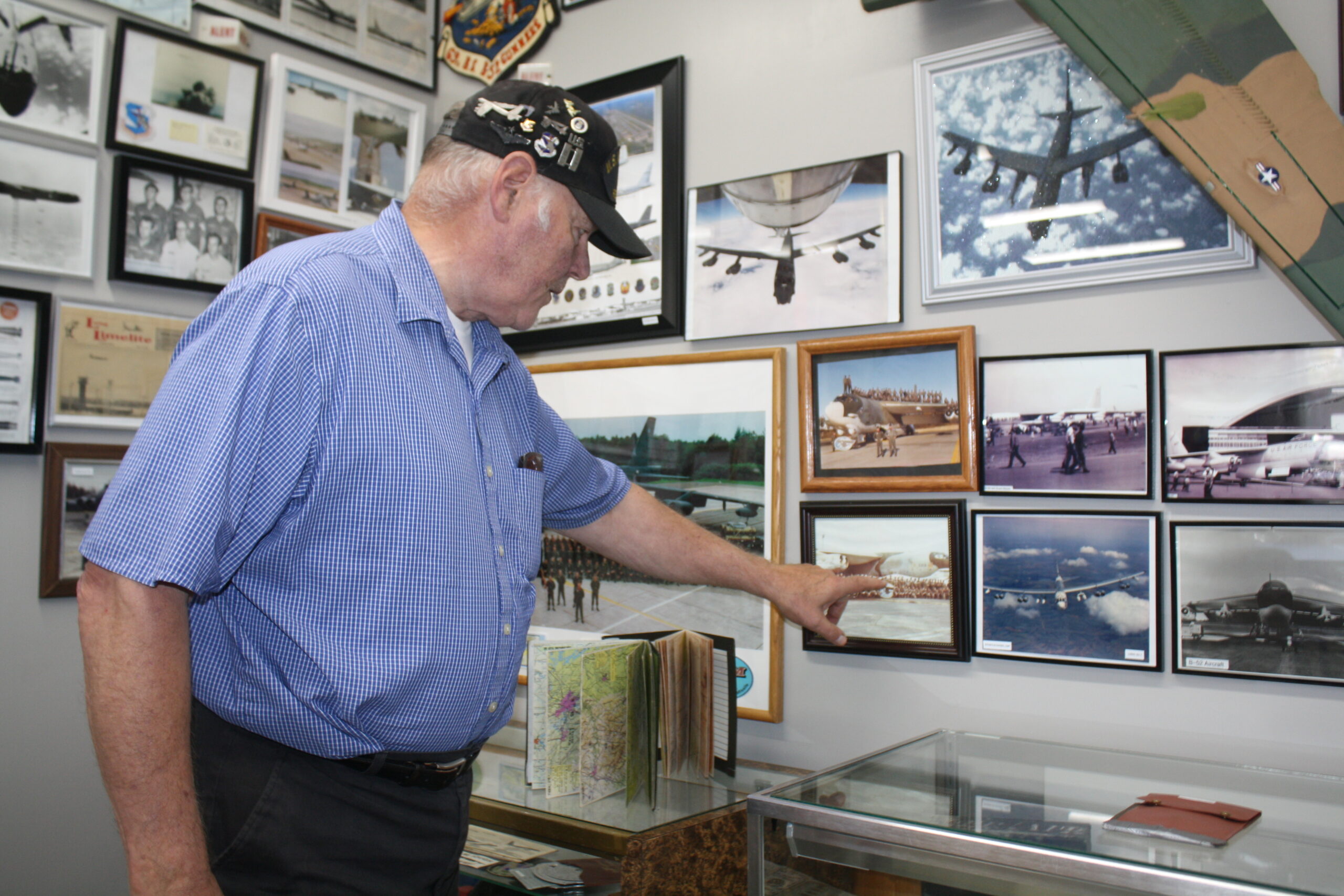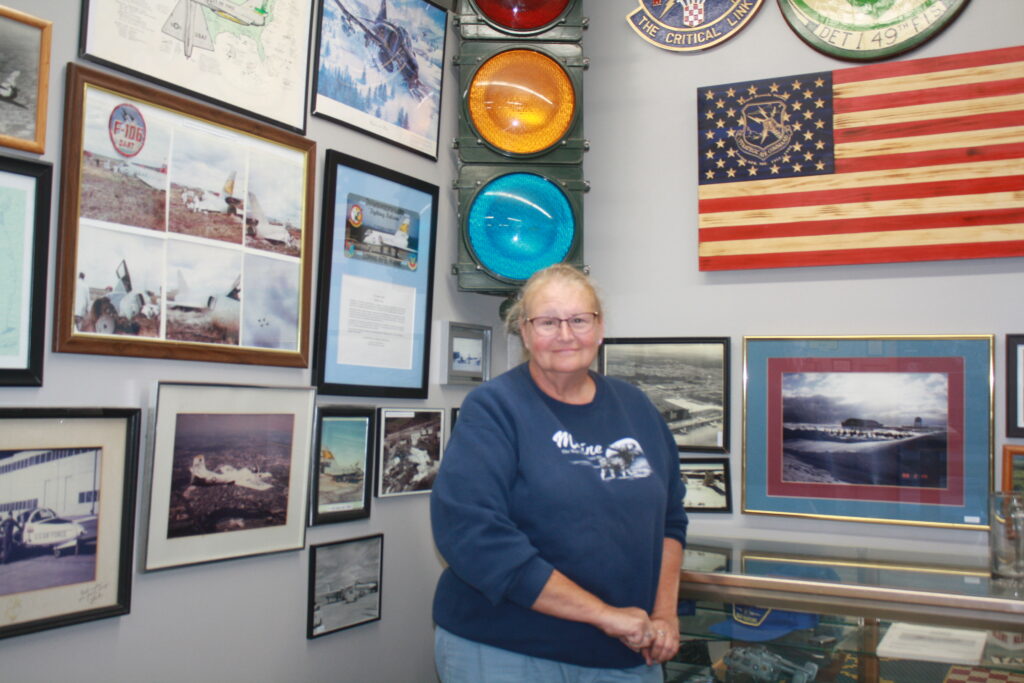
LIMESTONE, Maine – Since Loring Air Force Base closed on Sept. 30, 1994, most conversations have centered on how to revitalize the base as a commerce center and its role in Aroostook County’s overall economic growth.
But those who served at Loring will always remember the base for the crucial and sometimes frightening role it played at the height of the Cold War. Two veterans who were stationed at the base and still live near it recently shared stories of their service and the base’s history.
In 1947, the U.S. Air Force chose Aroostook County to host one of the new Strategic Air Command bases, meant to house and possibly deploy nuclear weapons. The move came when the U.S. was engaging in a nuclear weapons arms race against the former Soviet Union, now Russia.
Aroostook was the closest U.S. continental point to Europe. That positioned Loring as one of the most strategic locations for homeland security and nuclear arms defense in the event of a Soviet attack on the northeast or European allies.
The Limestone Air Force Base became operational in 1953, and was renamed Loring Air Force Base a year later after Korean War hero and Maine native Charles Loring. In the ensuing decades, Loring stored nuclear bombs in over 80 bunkers in an area of the 9,000-acre base that only classified personnel knew about.
Though the Cold War was mostly a non-combat conflict between the U.S. and Soviet Union, Loring’s proximity to Russia meant that, if activated, pilots of the base’s B-52 aircraft could have taken off within minutes, the nuclear bombs in tow.
“It’s almost like two people are about ready to get into a fight, but they know if they do, they’ll both get into serious trouble,” said Ray Hildebrand, who served at Loring from 1976 until its closure. “So both sides stare at each other and say, ‘Don’t you dare do it.’ And that was called the Cold War.”
Hildebrand, a Connecticut native, started off at age 27 as a B-52 navigator at Loring, and was promoted three years later to radar navigator bombardier. In the latter role, Hildebrand commanded one of many six-member crews within Loring’s 42nd Bomb Wing squadron.
Ultimately, Loring’s B-52 squadron was never called to drop nuclear bombs on the Soviet Union or its allies, but Hildebrand and squadron members spent their days preparing for that possibility.
Several times a week, Hildebrand led his crew on long flight missions to ensure all navigational, electrical and other systems on the planes worked properly. Every third week, crews would go on weeklong “alert duties” that required them to leave their homes and stay in a building close to B-52s that were armed with nuclear weapons.
Most of the squadron’s regular missions lasted nine to 11 hours. They would fly the planes sometimes as far as Montana, Wyoming and North and South Dakota, but other times were closer to home. Every time, they used navigational maps and communicated with smaller Air Force stations, like one in Ashland, to simulate where they might hit a target if a war plan was put into action.
The planes were never armed then, Hildebrand noted. He recalled one particularly exciting mission that felt more real than any of the others.
“Our longest trip was in 1979 when we flew to Europe and back nonstop for 19 hours,” Hildebrand said. “We were practicing how to support NATO if Russia invaded into western Europe.”
As a commander, Hildebrand was one of the rare people authorized to see the plan of attack against the Soviet Union.
Knowing what could have happened always weighed on his mind.
“Had we actually gone to war, I would have been responsible, with the first target alone, for the deaths of over a million people. And they would have died just like that,” Hildebrand said. “Thank god we never had to do that.”
The Cold War’s harshest realities also made their way to Loring service members in non-combat roles.

Polly Chike, a native of West Virginia, first served at Loring from 1983 to 1986, working as a computer operator for payroll and other documents processing. Loring was her first Air Force assignment. In 1991, she returned and was assigned to the 2192nd Communications Squadron, which oversaw classified security communications for the entire base.
Chike was 21 when she first came to Loring and had little knowledge about the Air Force’s war strategies. But when she returned, she worked with combat-based squadrons at Loring and began to feel the stress of living under the Cold War’s shadow.
“Every day it was, ‘The Russians are going to come today. We need to be prepared,'” Chike said. “Looking back, I was more stressed than I was in Saudi Arabia and Kuwait later in my career. [In those conflicts] it was, ‘This guy has a rocket and he’s shooting over there.’ I could see it, as opposed to never knowing when the big thing would happen.”
Not long after Chike returned in 1991, the federal government announced that Loring would be one of 31 military bases in the U.S. to close in 1994, just as the Cold War was winding down and the Soviet Union collapsed.
That decision was controversial from the start.
Maine’s U.S. congressional delegation called on federal leaders to reconsider because Loring’s location gave flight crews the shortest flight time to the Middle East. In the early ‘90s, Loring flight crews were deployed to southeast Asia during Operation Desert Shield and Operation Desert Storm. More than 1,700 other U.S. military aircraft made refueling stops at Loring during those conflicts, according to Loring Air Museum.
Maine legislators also were concerned about a post-Loring economy for Aroostook. The base’s closure ultimately resulted in the loss of 4,500 military jobs and 1,100 civilian jobs, and a massive population exodus for the region.
Though most Loring personnel moved on, Hildebrand and his wife Carolyn stayed in Aroostook and now live at Madawaska Lake. They regularly volunteer as members of Loring Air Museum.
Hildebrand has always had mixed feelings about Loring’s closure, but thinks it was inevitable.
“We wore out those planes way ahead of their time. They were showing signs of cracks in the wings and in the engine pods, where they hooked onto the wings,” Hildebrand said. “When they closed the base, they were running out of flyable B-52s.”
Chike retired from the Air Force in 2007 and then worked for defense contractors in Denver, Colorado before fully retiring and returning to Aroostook in 2022. She now lives in Woodland and is president of Loring Air Museum.
Even after leaving in 1994, Chike always considered Loring her favorite base. It was not just a place where she served, but also where she first saw the Northern Lights and discovered a love of being outdoors in The County, from snowmobiling to walking in the woods near the base.
That’s partly why Chike still finds herself in tears while recalling the last airplanes that flew away in 1993, as the Air Force prepared to close Loring for good.
Three decades later, even after seeing redevelopment efforts struggle to pick up steam, Chike knows that Loring’s life was meant to be a short one.
“I come up here all the time. It’s sad but it’s peaceful. Because I think Loring really did serve its purpose [as a base],” Chike said.







